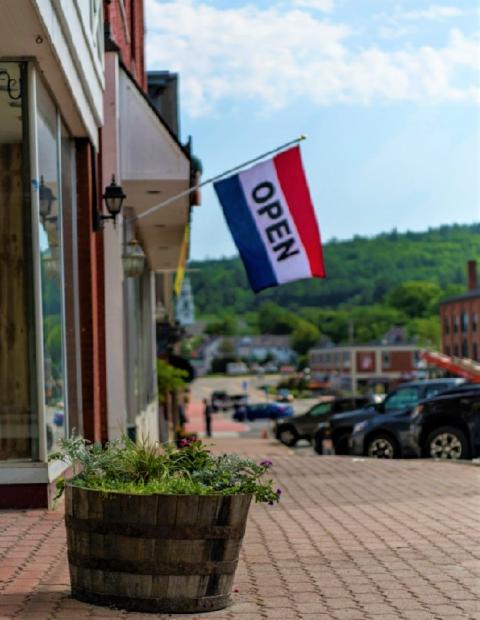
The pandemic has disrupted the economy, employment, and community vibrancy. Small towns and main streets have been especially hard hit by the impact the pandemic has had on small businesses. Communities and small businesses will benefit by working together for economic recovery and managing change. Businesses and local communities have responded by being innovative, flexible, and resilient. Resiliency planning is needed for both business and community to rebound and be prepared for future disruptions. Bringing business and community together allows for the exploration of mutual topics of interest. Communities will gain a better understanding of workforce needs and related quality of life characteristics such as recreation, childcare, transportation, and education. Community leaders can foster stronger relationships so businesses can adapt to changes in supply, finance, regulation, and workforce. Businesses will gain an understanding of the support that is available at the community level and interact directly with community leaders. A stronger local network can be created. Building resiliency in our businesses and communities together will result in a stronger economy, network of leaders and vibrant communities, resulting in a high quality of life.
- According to the Institute for Business and Home Safety, up to 25% of businesses do not reopen following a major disaster. FEMA has this number at nearly 40%. Business resiliency planning is aimed at reducing this.
- In a 2020 NH SBDC state-wide survey, only 19% of businesses had resiliency plans in place pre-pandemic and 73% thought it would be important to the business in the future.
Resilience Defined
Resilience has been defined for the individual, business, environment, climate and most recently the community economy. These definitions have similar characteristics. Resilience is the ability to respond, adapt and recover from the challenges of a sudden shock such as a fire, natural disaster, or pandemic. Often it is described as getting back to where you were and getting back to normal. In this time of COVID-19 we are seeing an expanded definition which is about going forward for a better, different outcome – to be better than before by adapting, innovating, transforming, and connecting.
Guiding Questions for Community Economic Resilience
- Resilience of what? Think about business and community resilience as beneficial.
- Resilience to what? Identify the threat or shock. Consider the threats beyond the pandemic such as natural disasters or changes to workforce.
- Resilience for whom? Consider the beneficiaries of this work and consider how you might include everyone.
- Resilience for what? Identify your goal such as a better bottom line, jobs, social benefits, community vibrancy?
Business Retention Strategy
Economic development includes efforts at business retention. Communities work to keep, expand and strengthen existing businesses. This strategy is successful and often a key tool for small towns and rural communities. Business retention strategies have been around for decades and focus on understanding and meeting the needs of businesses, so they continue to thrive in a location. This is important for jobs, taxes, community vibrancy and quality of life. Business retention strategy now should focus on resiliency for both communities and businesses. The pandemic and the economic impacts have resulted in community leaders connecting directly with businesses to learn about their immediate needs such as accessing financial resources, regulatory change for outdoor dining, and buy local initiatives. Communities can be supportive of business resiliency planning as an economic development strategy. Businesses benefit from a strong quality of life and vibrancy in their community.
Business Resiliency Planning
- Identify key resources, employees, business functions, goals, and threats.
- Plan for the threats and impacts to the business functions.
- Implement the necessary steps in the plan.
- Recover with strategies to return to normal business operations.
Community Resiliency Planning Efforts
Cities and towns can incorporate concepts of resiliency planning in their master plan, emergency plan, climate adaptation plan, economic development strategy and capital improvements plan. Municipal boards and staff can review existing plans with an eye to identifying threats and possible solutions to ensure resiliency.
For more information, reach out to community.development@unh.edu or visit NH Small Business Development Center.